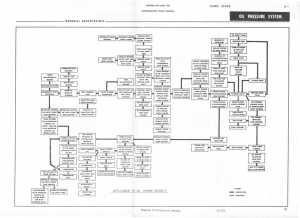
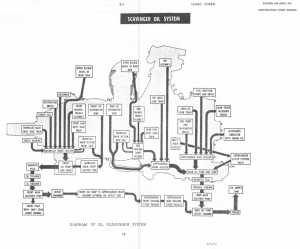
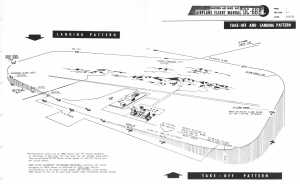
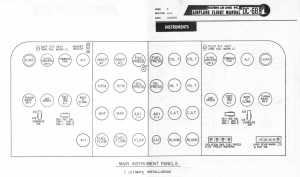
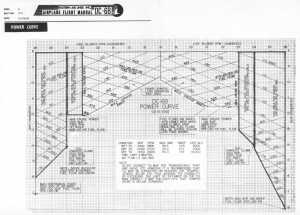
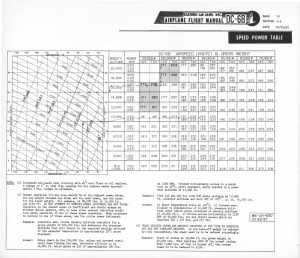
The Making of a Flight Engineer
Part 4: Airline Experiences — Lockheed Constellations, Douglas DC-6s and DC-7s
by Floyd J. Stelly
After my discharge from the Air Force, I sent an application to Eastern Airlines after seeing an advertisement for flight engineers in Flying magazine. Shortly after they contacted and scheduled me for two interviews. I was hired and reported to ground school in Miami. We started by studying to pass the government-required flight engineers’ written exam then the Lockheed Constellation aircraft systems. Most applicants were Eastern mechanics and a few, like myself, had flown in the military. Eastern’s Constellation fleet comprised of models 749, 1049, 1049 C & G. The ground school was about three months long. Then there were local training flights, familiarization and observation passenger flights. When the training personnel thought you were ready, you were scheduled on a regular passenger flight with a check flight engineer observing. If you passed, you were scheduled on regular line flights.
I flew out of Miami for about two months and then was sent to the New York base. It’s the seniority system. Most flight engineers start there. You flew out of Idlewild, which is now JFK, LaGuardia, and Newark. Luckily I spent only three months there before being reassigned to Miami, which was my first choice. Trips were rather routine and I had lots of time off, which I took advantage of.
While in the military in Europe, I went to night school to get my powerplant mechanics’ license. Eastern had a ground school and licensed their new mechanics, and I was allowed to attend and get my airframe license. At that time I didn’t realize how important these licenses were. Later, when I worked at two other airlines the A&P license was a major requirement for employment. While in high school I had taken flying lessons and soloed at the age of sixteen, but hadn’t completed my private pilot course before I joined the Air Force. I saw this as a good time to continue with my personal flying. I completed the private and commercial courses and a short time later, my instrument and multiengine rating.
I was sent back to ground school on the Douglas DC-6Bs which Eastern had acquired. We flew some leased aircrafts from PanAm and Braniff during the slow season. We also had an interchange agreement with Northwest Airlines where each crew flew a segment of a continuing flight. When we started getting the new DC-7Bs, I was sent to short ground school and checkout. The planes were similar to the DC-6B, except larger and with the same R-3350 compound engine as the Constellation 1049 C & G models.
Douglas aircraft didn’t have a side-facing flight engineer station like Lockheed’s. We sat on a fold-down seat between the two pilots. All switches and controls could be easily reached but you need a clipboard to write on. All airplanes had an engine analyzer system, which was always on and very useful in troubleshooting. Two inoperative spark plugs and one cylinder meant the engine should be shut down to prevent further damage. Individual shorted or fouled plugs, magnetos out of time or inoperative spark advance were the usual maintenance write-ups. The two engine fuel-injection pumps were reliable except when out of synchronization which caused for front row of cylinders to run hotter than the rear in cruise after leaning the engine.
In ground school, you were led to believe you feathered an engine or disconnected a cabin supercharge on every trip. While spending one year in Miami before my next domicile assignment, I feathered only one engine because of severe oil leak to the power recovery turbine.
To reduce boredom one month, I volunteered for flight training and check rides for pilots. This was before flight simulators and you actually feathered the engine or simulated failure by reducing RPM and throttle. The check pilot sat in the right seat and would signify which engine you wanted cut with his right hand and the engine which you wanted shut down with finger or fingers extended. I would cut the mixture and call out the failed engine. I would then feather the engine and in case of a second engine failure, just reduce RPM and throttle. It was fun watching the person flying sweat and fight with the controls.
Eastern opened a small flight engineer base in New Orleans in 1957. Since that was near my hometown, I volunteered and was assigned there. In five years I was based there we flew Constellations, DC7s and later the Lockheed Electra.
I flew the New Orleans-Mexico City route using the DC-7s for about two years. When on the ground at Mexico City Airport, you had to be on the alert concerning the engine idle richness because of the high altitude. Coming out of reverse after landing and when doing all taxing, the mixture control had to be leaned between the auto-lean and idle cut-off position or the engine would quit. Take-offs were great because you just pushed all the throttles to the stop. At the first power reduction you only reduced the RPM, you didn’t have to move the throttles until climb power was set. We tried to fly all flights in low-blower, usually cruising at twelve or thirteen thousand feet maximum. In high-blower the cylinder engine temps were very high and created lots of combustion chamber problems.
It was fun being at a small base like New Orleans where you knew everyone. During my last six months with Eastern, I flew the Lockheed Electra from New Orleans to Chicago and back the same day. In June of 1962, the flight engineers union went on strike against the company concerning the make up of the cockpit crew. The pilots wanted one union member in the cockpit and for everyone to be pilot qualified. I wouldn’t cross the picket line and my employment was terminated.
The Boeing Company in New Orleans was hiring people at that time to build a Saturn V booster rocket. I applied and was hired as an experimental mechanic to work on the inner tank and fuel tank baffles. This required drilling many very precise holes and installing fasteners. Some were done free hand and others with pneumatic drills. Three inspections were required before a fastener was installed.
While there, I met a friend who said American Flyers in Ardmore, Oklahoma was hiring flight engineers with A&P licenses and Constellation experience. I called and was interviewed over the phone and hired. Reporting there, I was surprised to see their equipment. They had the Constellation 049, 149, 1049 E & G models. The 049d and 149d were very old. The 1049 had electric propellers, which I had become familiar with in the Air Force. After a brief checkout I was sent on charter flights which meant being away for as long as two weeks. Sometimes if an aircraft inspection came due while you were out, you had to perform this inspection with the help of general aviation personnel if necessary. Engines were overhauled at a West coast base and lots of my engine shut downs were because of broken connection rods in 049 and 149. This meant we would do a three engine ferry back to Ardmore for an engine change.
On one of my long flights across the US, I recall an oil consumption of 120 gallons. The 1049 aircraft had a 67-gallon reserve tank and fuselage, and you could transfer oil to any engine in flight. I reported this to the maintenance supervisor. He said keep flying as long as the oil didn’t foul the spark plugs.
Our flights were composed of some civilian charters and some military flights. The military flights stopped in California and then continued to Vietnam on another carrier. I worked for American Flyers for about a year and a half. A friend there applied for a job at National Airlines in Miami and was hired. He said they were still hiring and I should apply. I did and was hired in February 1966. The A&P license was again a requirement for employment. National flew Lockheed Electras, Boeing 727s, and Douglas DC-8s.
 |
 |
 |
| R-3350 Turbo Compound Oil Pressure System Diagram | R-3350 Turbo Compound Oil Scavenge Diagram | DC-6 Flight Pattern |
 |
 |
 |
| DC-6 Instrument Panel | P&W R-2800-CB16 Power Chart | DC-6B Speed Power Table |
Part 1: C-54s, DC-4s and C-82s in Europe
Part 2. Back Stateside – C-119s from Miami to Greenland
Part 3. Stateside - C-124s
Part 5. Airline experiences – Lockheed L-188 Electra
Part 6. Airline experiences – Turbojets